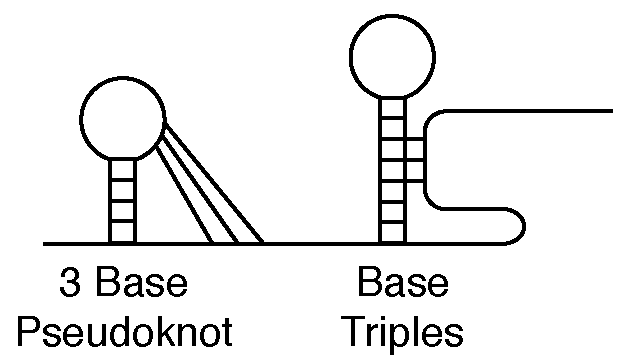Pseudoknots and Triples

An RNA sequence can be folded initially into a secondary structure consisting of free strands, Watson-Crick stems, along with four different types of loops. Logically speaking, there might be interactions between a loop and a free strand, or a loop and a loop forming new stems. Thus, a secondary structure could be folded further into a tertiary structure. Such a teriary structure is called a pseudoknot. As a result, there are 14 different types of pseudoknots: 10 due to loop-loop interactions and four because of loop-freestrand interactions. However, in reality, some of them are not possible because of stereochemical or thermodynamic reasons. A (simplest) H-type pseudoknot occurs when a hairpin loop pairs with a free strand to form a new stem. In addition, this new stem is adjacent to and coaxically stacks with the stem of the hairpin loop. The connecting loops consist only of free nucleotides.1
A base triple forms paired bases in a stem also combine with unpaired bases and therefore form triple bases. Currently our algorithm does not deal with this kind of structure.
Reference
1. Shapiro, B.A. and Wu, J.: Prediction RNA H-type pseudoknots with the massively parallel genetic algorithm. CABIOS,